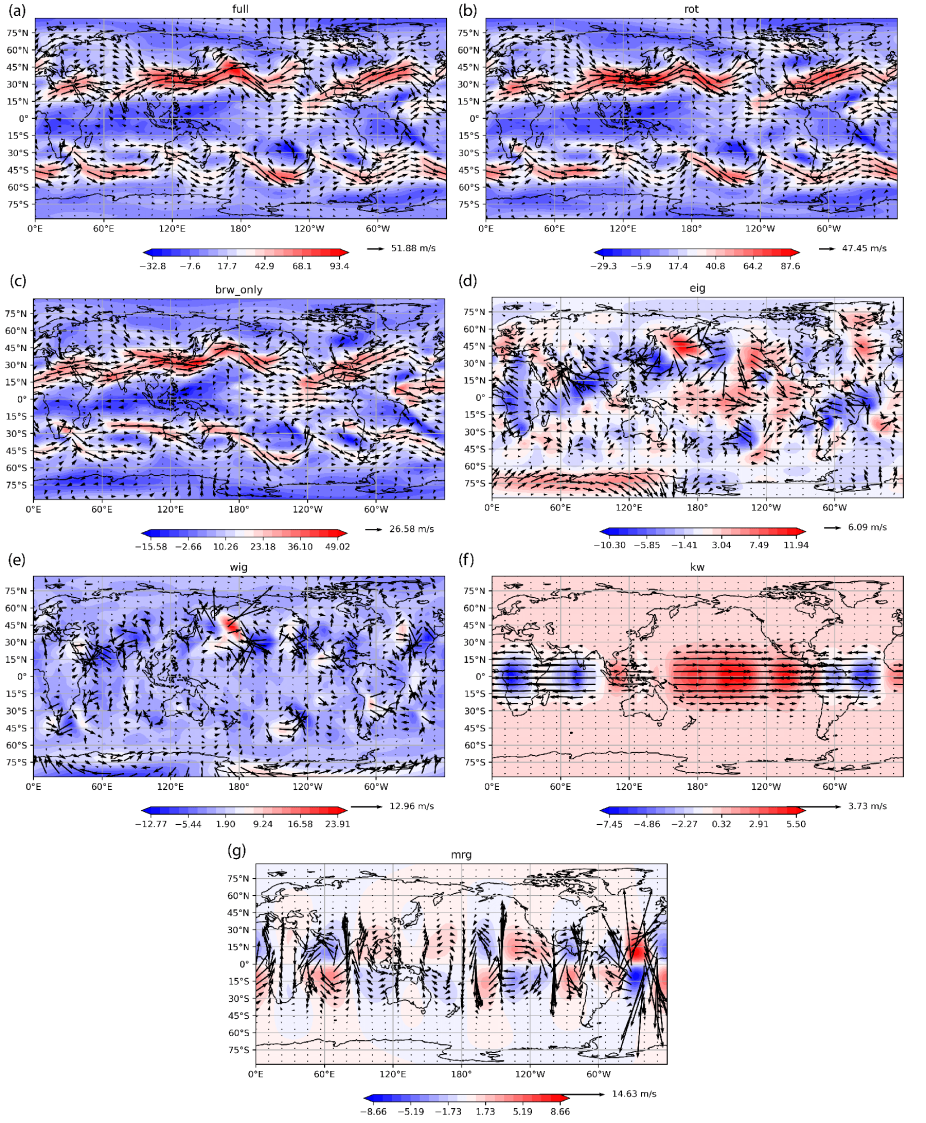
Snapshot of the horizontal velocity and geopotential fields at 200 hPa (a) and their decomposition onto the normal mode function basis for rotational modes (b), the baroclinic component of the rotational modes (c), eastward inertio gravity (EIG) modes (d), westward inertio-gravity modes (e), Kelvin wave (f) and the mixed Rossby-Gravity mode (g).
Atmosphere: The study of tropical tropospheric disturbances has led to important challenges from both observational and theoretical points of view. In particular, the observed wavenumber-frequency spectrum of tropical oscillations, also known as Wheeler-Kiladis diagram, has helped bridging the gap between observations and the linear theory of equatorial waves. In this study, we obtained a similar wavenumber-frequency spectrum for each equatorial wave type by performing a normal mode function (NMF) decomposition of global Era-Interim reanalysis data. The NMF basis utilized here are given by the eigensolutions of the primitive equations in spherical coordinates, linearized around a resting background state. In this methodology, the global multi-level horizontal velocity and geopotential height fields are projected onto the normal mode functions characterized by a vertical mode, a zonal wavenumber, a meridional quantum index and a mode type, namely Rossby, Kelvin, mixed Rossby-gravity and westward/eastward propagating inertio-gravity modes. The horizontal velocity and geopotential height fields associated with each mode type are then reconstructed in the physical space. The corresponding wavenumber-frequency spectrum is calculated for the 200 hPa horizontal wind field. The results reveal some expected structures, such as the dominant global-scale Rossby and Kelvin waves constituting the intraseasonal frequency associated with the Madden-Julian Oscillation. On the other hand, some unexpected features such as eastward propagating westward inertio-gravity waves are also revealed by our observed 200 hPa zonal wind spectrum. Among all possible nonlinear processes, we focus on the analysis of the interaction between Kelvin and westward inertio-gravity waves, providing evidence for their coupling. Apart from the nonlinearity, we also discuss the potential roles of a vertically/meridionally varying background state and the coupling with moist convection in explaining the departures of the observed spectra from the corresponding linear equatorial wave theory.